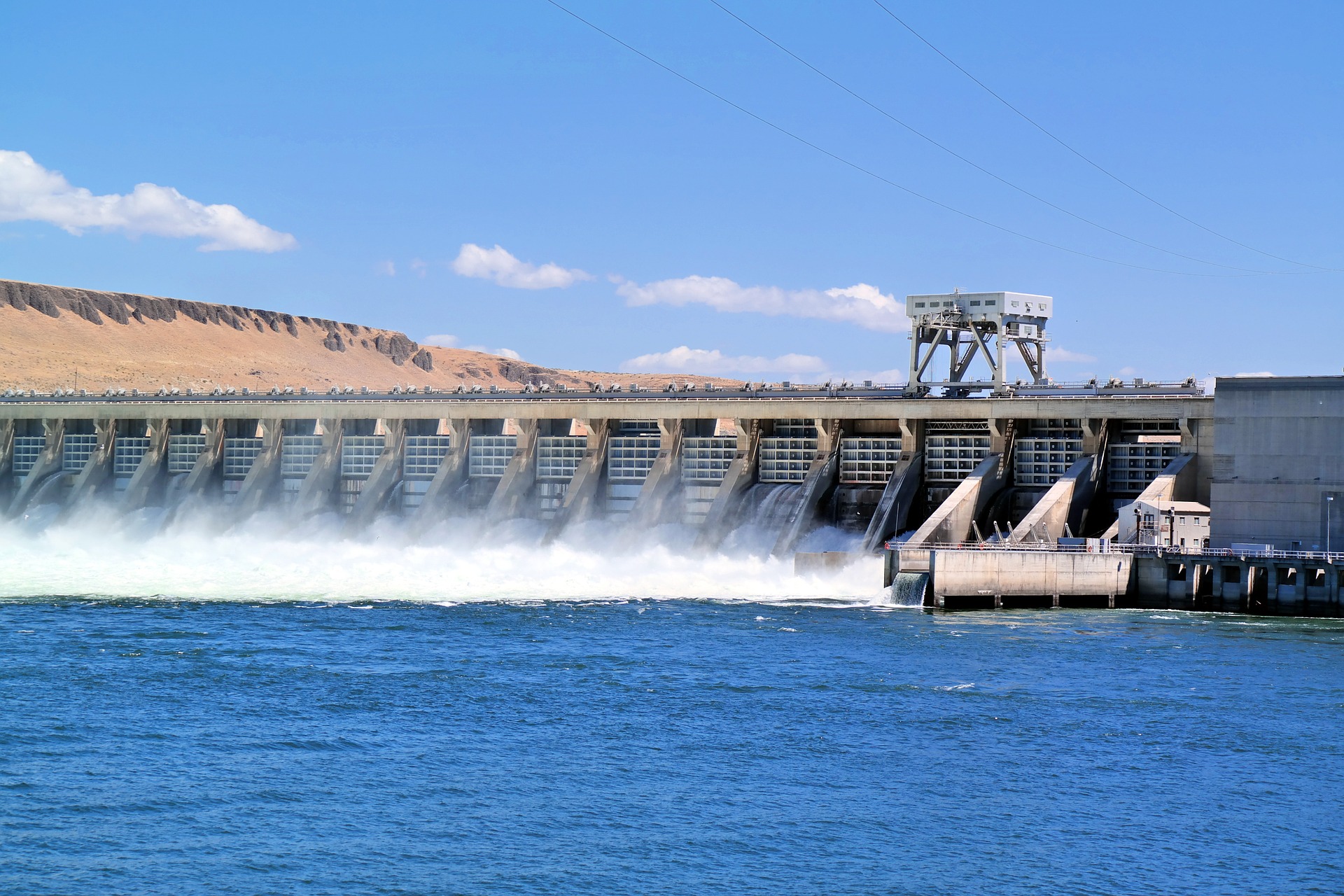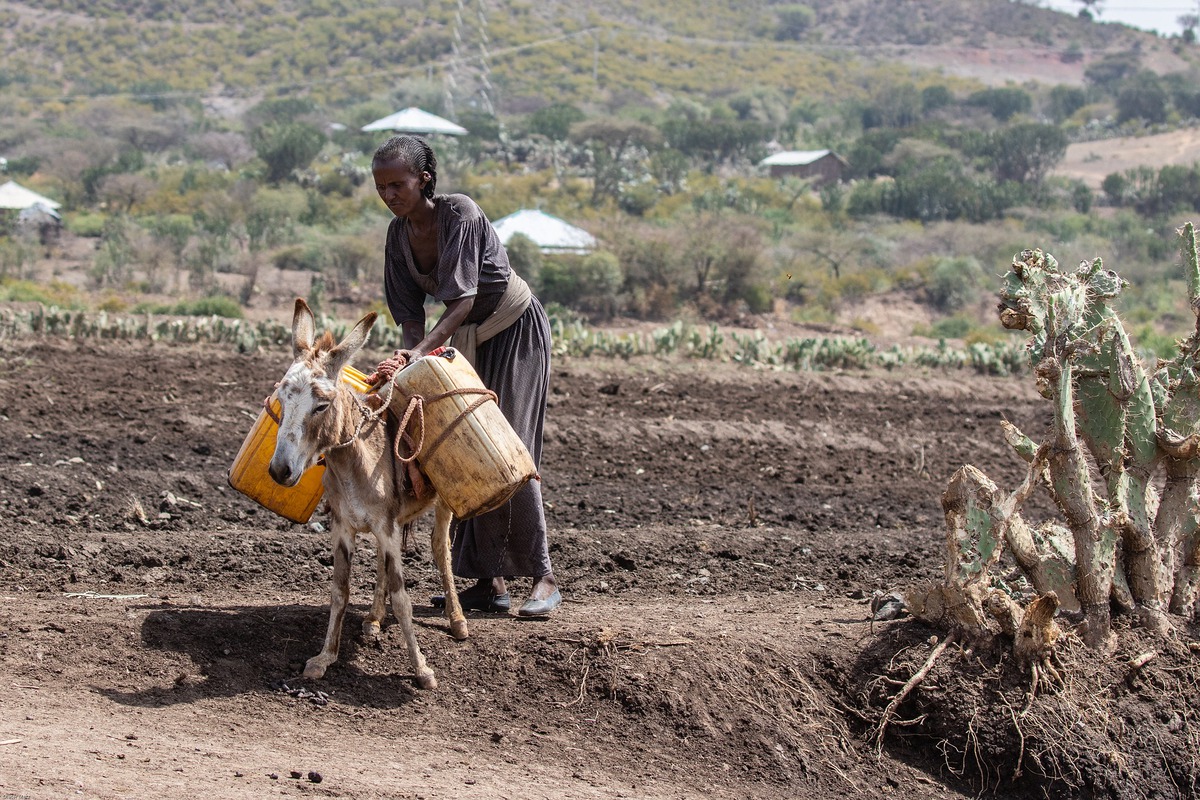Changes in climate, mounting tensions over control of the Nile River and arising violence are posing serious threats to the socio-economic stability of Africa’s oldest independent country.
Ethiopia is Africa’s second most populated country and has the strongest power in Sub-Saharan Africa and the fastest growing economy, despite the fact that a large amount of the population is impoverished. During this last decade, Ethiopia’s GDP had an average annual growth rate of 9,8 %. In comparison, the average GDP growth of Sub-Saharan countries was 2,3 % in 2019. The economic prosperity of this country has alleviated poverty for parts of the population. Back in 2011, 30 % of the population were considered to be below the national poverty line. Fast forward five years to 2016 and that number had decreased to 24 %. But Ethiopia’s promising economic gains and regional stability are now facing imminent risks of destabilization.
Due to the lack of rainfall, 2019 was the driest season Ethiopia had witnessed in the last 35 years. Ever since, Ethiopia has suffered from severe droughts. Out of a population of 116 million people, 7 million of them are as of this year, in need of various forms of humanitarian assistance. While the Eastern and South-Eastern regions are struggling with a long-lasting drought, regions at higher altitudes are experiencing severe flooding. More than 46,000 people have been displaced as a consequence of the floods. The population is heavily dependent on fertile areas and healthy livestock since three out of four Ethiopians are living off of farming. This kind of livelihood is for obvious reasons sensitive to droughts and flooding which in turn exacerbated by intensified climate change.

Detrimental Nile River politics are rocking the stability of the region as Ethiopia’s attempt to dam Africa’s longest river threatens peace in the region. The construction of the Grand Ethiopian Renaissance Dam (GERD) is a prime example of Ethiopia’s economic boom. The dam is located on the Blue Nile River east of the border of Sudan. The final costs of the dam construction will reach $4 billion and will be the largest hydro-electric dam on the African continent. To contextualize, the dam is estimated to produce 2½ times more electricity than the Hoover Dam in the U.S. The fact that the dam can produce electricity to all of the Ethiopian households which currently lack access, roughly half of the population, illustrates the immense potential of the GERD. Aside from that, the dam is activating a nationalistic sense of belonging and hopes of future prosperity among the Ethiopian population, something that certainly is of importance for a nation overburdened by widespread poverty and political turmoil.
The construction of the dam started in 2011 and is still under construction. It has sparked a dispute between Ethiopia on the one hand and Sudan and Egypt on the other. The dispute stems from the fact that Sudan and Egypt, as downstream countries of the Nile, are worried that the dam will affect the waterflow. Contrary to that, Ethiopia argues that the filling of the dam will not have a significant impact on the water flow of the Nile. Officials in Addis Ababa advocate for the dam to be filled completely when the dam is finalized in 2023. This in order to maximize the electricity production as soon as possible. Besides Ethiopia’s urgent need for reliable electricity, the dam will also be beneficial to other countries such as Sudan, Kenya and Djibouti; which are all connected to Ethiopia’s grid and will experience a steadier electricity supply once the dam is in place. What the future holds for the filling of the dam remains to be seen. However, failed negotiations between Ethiopia, Sudan and Egypt in combination with the fact that Ethiopia started filling the dam in July this year, implies that the dispute might turn into a long-lasting conflict. An evident example of this is Donald Trump’s statement on the matter saying that “they {Egypt} will blow up that dam”. The U.S has sided with Egypt and has cut $100 million in aid to Ethiopia as a consequence of the filling of the dam. Another destabilizing event in Ethiopia is the armed conflict that broke out in the beginning of November between the government and the ruling party in the Tigray region in the North of the country.
The background to the conflict is Prime Minister Abiy Ahmed’s accusation which stated that the ruling party of Tigray had carried out an attack on a government defense post in an attempt to steal military artillery and other equipment. However, the conflict between the government and the region has a long history. The ruling party, the Tigray People’s Liberation Front (TPLF) seized the power of Ethiopia back in 1991. This was carried out after fighting the military dictatorship that ruled Ethiopia in the 70s and 80s. Whereas the TPLF distributed a considerable amount of power to Ethiopia’s regions during their time in office, Prime Minister Abiy has steered the country in the opposite direction. He wants to increase the power of the federal government and decrease the sovereignty of regional authorities. This has sparked resentment within the Tigray population along with other regions and ethnic groups. An apparent indication of the disparity was the election that took place in Tigray in September. The regional election was realized in spite of the fact that the general election was postponed throughout the country due to the corona pandemic. Although reports from the region are scarce due to communication blackouts carried out by the government, hundreds or even thousands of people are estimated to have died and tens of thousands have been displaced. According to a UN department, 40,000 people have fled the Tigray region and migrated to Sudan as federal military forces are strengthening their position in the region. Prime Minister Abiy, gave the local leaders an ultimatum to either surrender by the 25th of November or face a “final offensive” on Mekelle, the capital city of the region with a population of 500,000 people. While writing this on Thursday, 26th of November the last reports confirm that the Prime Minister has declared an assault on the city of Mekelle and the TPLF party has vowed to fight back. While the UN has stated that the attack on Mekelle might be classified as a war crime, no one can say for certain if Prime Minister Abiy, the Nobel Peace Prize laureate of 2019, in the days to come has initiated a civil war or not.
Featured Photo by D Mz on Pixabay

David Ekelund
Writer for Utblick since autumn 2020


